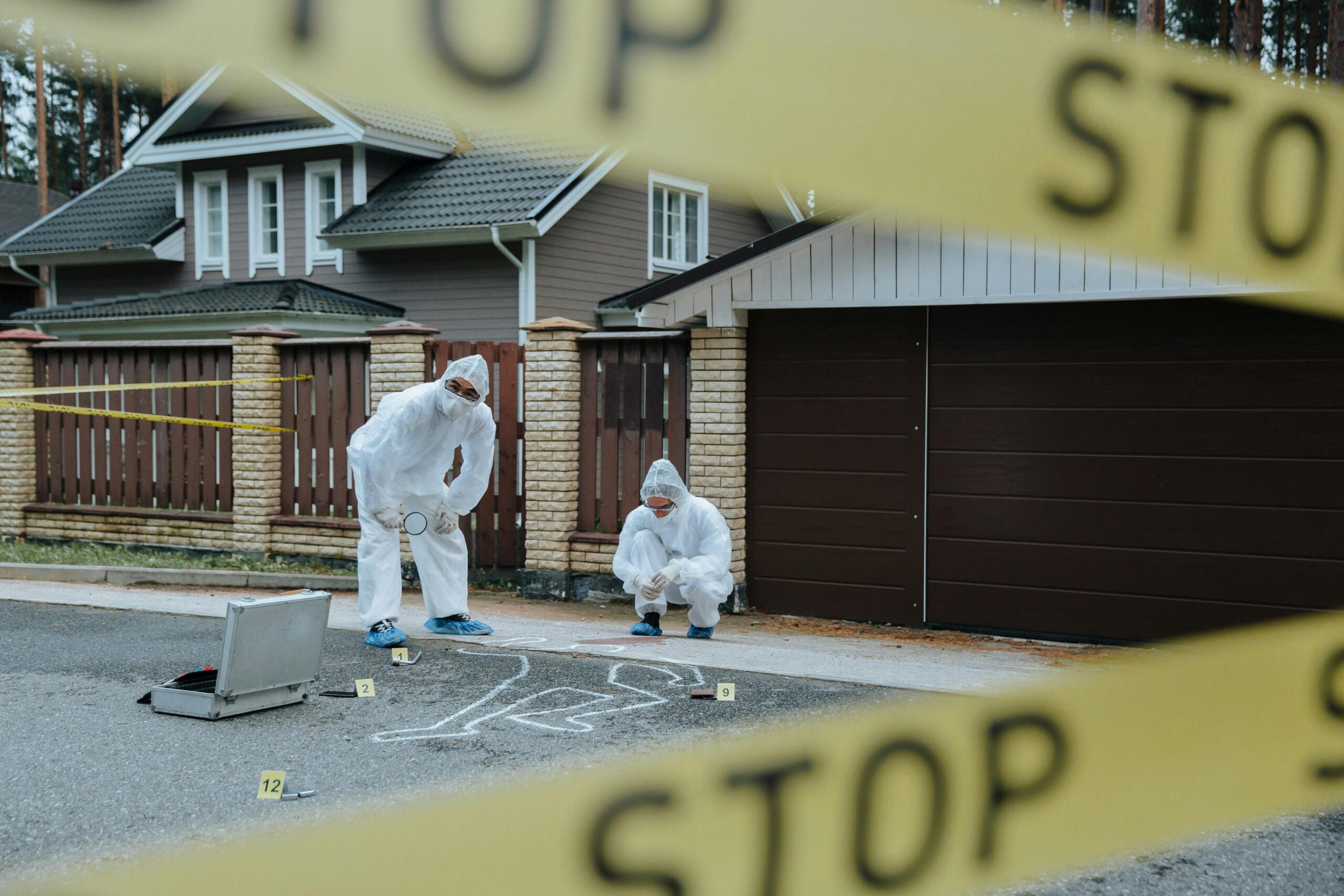Crimes against human life are the most serious crimes. What are the differences between murder and manslaughter?
Both criminal offences involve the killing of a person (deprivation of their life). By death the law means biological death of the brain, with the restoration of all life functions being impossible.
Manslaughter (homicide) can be committed both by action (e.g. stabbing, shooting, long-term administration of poison to the victim) and by omission – failing to do something that the perpetrator was obliged to do according to the circumstances and his/her circumstances (e.g. the doctor deliberately fails to administer medicine to a sick person). However, in the case of manslaughter, killing by omission will be rather exceptional.
Murder
Murder is a voluntary offence. This means that the perpetrator must act with the intention to kill another person. If the perpetrator acted with the intent to endanger another interest protected by the Criminal Code (other than the interest in protection of life), but his or her actions resulted in death, the perpetrator is not criminally liable for murder
Example: the perpetrator intended to assault the victim and inflict bodily harm, he struck the person on the head, and by accident the victim staggered and fell down the stairs, broke his neck and died. The perpetrator would not be liable for murder, but for bodily harm or grievous bodily harm (resulting in death).
Murder is divided into 3 types:
- Simple murder
Simple murder is committed when the perpetrator intentionally kills another in a sudden movement of the mind. Thus, the perpetrator does not “premeditate and plan” the murder, but acts on the spur of the moment, in an affect, rage, or similar state of mind. However, the perpetrator is not in a state of “intense distress”, nor is he/she acting as a result of provocation by the victim (this would be manslaughter, discussed below).
Example: the perpetrator intended to assault the victim and inflict bodily harm, he struck the person on the head, and by accident the victim staggered and fell down the stairs, broke his neck and died. The perpetrator would not be liable for murder, but for bodily harm or grievous bodily harm (resulting in death).
Another example: A man returned a day early from a business trip and upon arriving home found that his wife had a lover at home. In the kitchen, he pulled a gun out of a drawer. He then ran into the bedroom where the wife and lover were and shot the lover.
The offender faces a sentence of 10 to 18 years in prison for simple murder.
- Qualified (premeditated) murder
A perpetrator commits qualified (premeditated) murder if he or she kills the victim with premeditation – deliberation or prior consideration. Premeditation is not a specific type of intent. It is rather a certain deliberate thought process of the perpetrator (decision-making) before committing the crime.
Deliberation means that the perpetrator has given due consideration to his actions and, based on his subjective attitude, intentionally kills another. Prior consideration means that the perpetrator plans his act in advance, i.e., considers the decisive circumstances of the crime (place, time of commission, use of weapon or other means suitable for killing the victim so as to successfully carry out the murder and exclude the victim's successful defence, etc.).
Example: The perpetrator planned and executed the ambush of the police escort, in order to free his accomplices on their way to the prison. The plan included disarming the police escort by shooting. He was aware that the police officers could and likely would die during his act.
For qualified murder, the perpetrator is liable to imprisonment for 12 to 20 years.
- Murder with particularly aggravating circumstances
The third type of murder is murder committed with particularly aggravating circumstances. This means that the perpetrator commits the act, for example, against a child under the age of 15, against a pregnant woman, against two or more persons, against an officer in the exercise/for the exercise of his or her authority, against a witness, expert witness or interpreter in connection with the performance of his or her duties. It also includes, for example, the repeated crime of murder.
In relation to the particularly aggravating circumstance, negligence is sufficient in terms of culpability.
Example: for the perpetrator to be culpable for murder of a pregnant woman, it is not necessary that he knew that the woman was pregnant. It is sufficient if, according to the circumstances of the case and his subjective disposition, he should have and could have known of her pregnancy.
For this offence, the law provides for a penalty of 15 to 20 years' imprisonment.
Manslaughter
Manslaughter is a so-called privileged offence to the offence of murder. The perpetrator is "privileged" in terms of criminal law because of his or her state of mind when committing the crime. What does this mean? Even manslaughter is a voluntary offence (meaning that the perpetrator at least knows that his/her actions may cause the death of the victim and is aware of this). However, the perpetrator acts
- in a state of intense distress, arising from shock, confusion or another excusable state of mind, or
- due to previous reprehensible action of the victim (so-called provocation).
Intense distress is a certain mental state of the perpetrator, usually manifested internally and externally. It is a major emotional agitation, it may also be a sudden or violent affective reaction. Although such a state of mind does not necessarily affect the offender's sanity, it will usually lead to a significant narrowing of his/her consciousness and weakening of his/her mental inhibitions, as it affects the ability to think rationally. Although killing another person in such a state of mind is not justifiable, the law treats such conduct somewhat more leniently.
Examples: A woman walks home at night and finds herself being followed by an unknown man. She is in a deserted place outside the town and runs away, the man runs after her and draws closer to her. The woman, badly disturbed by fear, pulls a pocketknife from her purse, stops and stabs her pursuer several times. She stabs him in such a way that the man dies on the spot.
Man took an axe and went into his garden in the evening to chop wood for heating. Suddenly his neighbour bursts out of the bushes and in order to scare the man in joke. In the moment of shock, the man instinctively swung the axe in the direction of the danger, he hits the neighbour and kills him.
For manslaughter, the perpetrator faces a prison sentence of 3 to 10 years. If he commits the act on two or more persons, on a child under 15 years of age or a pregnant woman, the offender faces a prison sentence of 5 to 15 years.
Last remarks
In the case of murder, preparation of the crime is also considered as crime. For manslaughter, due to the nature of this offence, no preparation is possible.
For the whole year 2021, the Police registered a total of 105 murders on the territory of the Czech Republic, but only 4 manslaughters. It is apparent that law enforcement authorities qualify the crime as manslaughter only exceptionally.
We specialize in defence in criminal proceedings, representation of victims and assistance to survivors.

